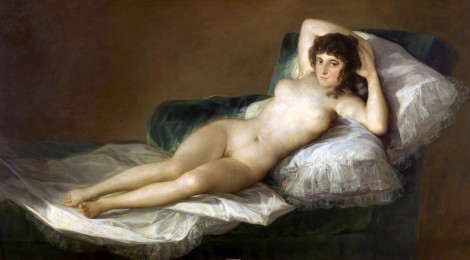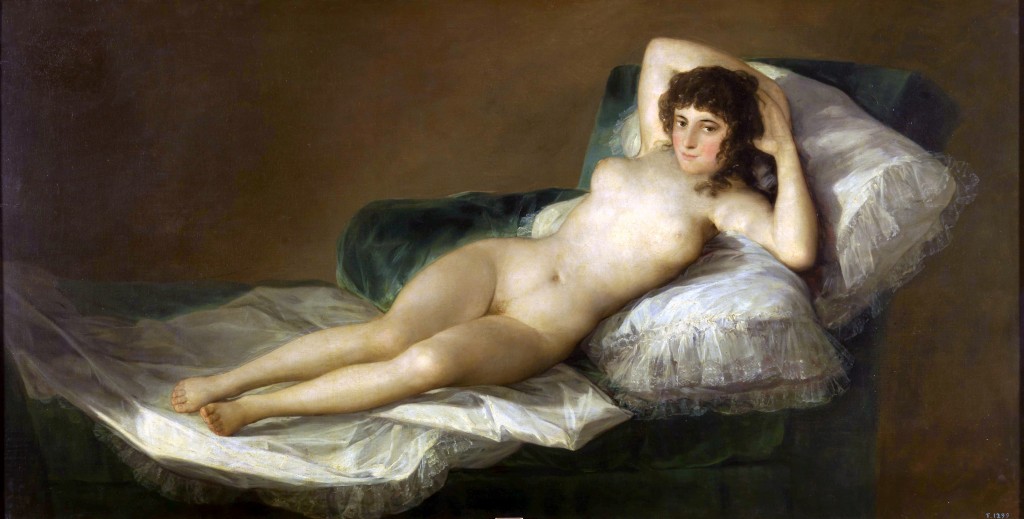
Unfinished Swansong
Undraped feminine figure; that is, even if infatuated with brevity, David still insists on putting it in three other words: the female nude. Yes, the very idea of the nude as a genre of art rushed adrenaline through his veins. No, it was not the seductive charm laymen espy, not the erotic dogmas connoisseurs conjure up, and certainly not the suggestive perceptions art collectors glean, but, as one of India’s greatest avant-garde landscape artists, for him, glory lied in the conception, in the process of painting, and in the magical evolution of a masterpiece out of brushes of his arm. Yet, David could not exploit the immense possibilities the nude art presented; no, not the critical or pecuniary possibilities but the creative odds the art could have unleashed if only his nudes had seen the light of the day. At last, after years, he was consumed by the desire to hold a solo show to let his nudes embark on a voyage that begins with the ultimate thud of an auctioneer’s hammer. But, citing the inimical political climate, art gallery after art gallery cold-shouldered him.
He knew too much about corporate trusts, artists’ cooperatives, art-collectives and the guerillas disguised as vanity-galleries to subject himself to their vagaries. A solo exhibition was an indispensable pageant to create the initiatory bustle to get the auction houses interested. After knocking several doors, eventually, he zeroed in on Mrs Kapadia, the soft-spoken, benevolent curator and director of Madras Contemporary Arts Gallery, the only lady in town conversant with art and artists and, at seventy-two, eclectic enough to venture into unchartered spaces.
Yet, despite knowing him for over two decades, she spurned by saying, “Given so much of vigilantism these days, exhibiting nudes is sacrilegious in conservative towns like ours, but galleries in Delhi and Bombay are far more progressive and accommodative.” David could see an unusual unease in her eyes, but giving up was unthinkable for his nudes had languished unseen for far too long.
“But then, in a nation where erotic temple statuettes of tenth-century India are still standing tall, millions thronging to see them, not having freedom to exhibit nudes is equally blasphemous,” David argued, “And such attitudes fly in the face of our age-old, aesthetically tolerant spirit.”
Mrs Kapadia was unimpressed with this sort of pitching that revealed his utter ignorance of the hazards of the path. However, she reluctantly sought to see his nudes, assuming that they would be pathetic enough to turn him away. The nudes were in his studio, but David had photographs of a few; she was overwhelmed, and, trying to conceal her positive emotions, this time, she sought the real McCoys, assuming that he won’t have enough of them to host a solo show.
The originals were so exquisite, so cultured, and so many that she, without uttering a word more, set aside two days for the exhibition despite her deputy’s protests. Discordance and art were incongruent; David tried to lecture the deputy director into agreement—how can his solo show start on a jarring note?
Nude art is part of high culture, does not belong to lesser ethos, and certainly not to the realms of kitsch. Even in this constantly-connected, hyper-social digital age, human form, largely the female one, continued to inspire artists. Unlike nakedness, nudes have no connotations of vulgarity or disgrace. And, undoubtedly, grace, emotion, and genius of nature induced awe and veneration in one and all. Painting a nude was not transgressing the realms of God; it was just an attempt to study His craft and an endeavor to touch the apogee of enchanting symmetry. While the process was a riotous splurge, a spiritual journey, and an artistic ecstasy, the finished nude instantly ceased to belong to the artist; it became a prized work of art for connoisseurs, art collectors and corporates. As the nude aged, changed hands, and subjected itself to impulses of market forces under the hammer, its value skyrockets but the artist has no say in its infinite journey, or in its ever increasing valuation.
If there is beauty in human form, what better way to celebrate it? What better way to bring out the best ideals of the form. How else would you behold, rejoice and wonder at nature’s finest creation? Once finished, the nude had its own persona, charisma, and it spoke for itself. It said different things to different set of eyes. The same set of eyes, on another day, heard completely different things. A nude was frozen poetry more alive than a naked beauty to evoke quixotic, poetic muse in the beholder.
The contours of masculine form were too hard or, in plain jargon, too edgy, to enthuse anyone. As for grace, by bringing out the best ideals of the form in the superlative nude David, the great Michelangelo had morally forbidden future artists worth their salt even to attempt a masculine nude.
The deputy director was cynical, confused, and remained skeptically pensive for a while. And then, coming out of contemplation, was pessimistically baffled causing quivers of dread in David. However, in the end, with a mischievous smile, not only seconded Mrs Kapadia but bared his own decades-old, suppressed curiosity in nude art.
The prestigious Contemporary Arts Gallery, in its sixty years of existence, at long last, had thrown open its doors for nudes. And David’s solo exhibition was an instant hit and, on the second day, crème de la crème, art collectors, fashionists, noblemen, celluloid bigwigs, auctioneers, peers, magnates, and critics thronged, lured by the most telling form of publicity on earth that is not taught at Harvard: word of mouth.
Success was just sinking in and, as David and Mrs Kapadia began gloating, fragments of glass rained. Smashing windowpanes to smithereens, stones poured down, glass splinters piercing the elite, art collectors, pressmen, and window-shoppers alike. Instantly discarding their gaits dictated by their social standing, in their elements, everyone cried, tumbled, and scattered around hitting dead-ends, failing to recall where the entrance or exit was. Pandemonium had found its latest and an altogether new category of victim in town: art gallery, a contemporary one at that. Following clanking sounds of shattering glass, larger stones rained, bringing larger fragments of glass, cutting deeper gashes, splattering more blood; David, shuddering in horror, crouched behind the central pillar that shouldered the huge roof. By now, no one knew how, all the visitors had managed to grope their way out, except him. Raining from other side, the deluge of stones battered David, and, as he began grieving, abruptly, the deluge stopped only to return in a more brutal appearance: hate storm.
While a dozen of their accomplices stood guard outside, four hefty, rugged guys, in saffron-yellow t-shirts, thundered into the gallery, faces masked, and eyes behind black goggles. The shortest of the goons caught David by hair and slammed him down. The second, lanky, put his military shoe on David’s neck. The third, podgy, caught his right hand and pounded David’s palm with his boot.
“Crush it, crush it…mash the fingers,” said the hefty guy who led the thugs, “That is the hand that paints women in nude…crush it, crush it, those bloody fingers should never paint again.”
While David cried aloud, the podgy guy, repeatedly pummeling the palm with heavy shoes, said, “You old bugger…you want nudity at this age? Why don’t you paint your sister in the nude?”
“Maybe his sister is too old,” said the lanky thug, “Or too ugly,” repeatedly kicking David in the stomach, “He is said to be a great f*****g artist man, he may start painting with his left hand, don’t leave it, crush it too.”
“Old, wicked so*o*b***h, don’t you know our culture. If you don’t respect our culture, we will f**k your fingers numb…you cannot paint again in your life,” said the leader clicking open his flick-knife. Ordering the podgy ruffian to take his shoe off the palm, sitting on haunches, the leader stabbed David’s palm until it looked a clump of flesh, blood and bones. Then David’s left hand too had to come to terms with similar savagery.
“Uh, this bugger is too gritty…does not feel pain while we rip his palms,” said the podgy guy, not knowing that they had already kicked David unconscious, much before the knife came out.
While two of them were finishing David’s hands, the other two piled the nudes in a heap, splashed petrol, and put a match. All the four goons cheered, whistled and danced around the bonfire of nudes until they turned ashes. They hugged, patted each other’s back, dashed out of the gallery and jumped into a moving pickup truck hailing Mother India.
Within minutes, Mrs Kapadia and jobless onlookers trooped in. David was lying unconscious in a puddle made up of blood clots, ashes, fragments of glass, petrol, and stones. She hustled to get him to hospital, but, the onlookers said, unconscious or dead, bodies cannot be moved from crime scene until police arrives, arrive they did an hour later, and David was taken to hospital much later.
As doctors began saving David, and his hands, Mrs Kapadia, waiting for some good news, deeply regretted having permitted David. First of all, knowing the political climate, I must have refused, Mrs Kapadia told herself.
Right from his Madras School of Fine Arts days, she knew everything about him. David was inspired by oleographic nudes of Michelangelo’s David, Goya’s The Nude Maja, Manet’s Olympia, and Titian’s Venus and the Flute Player. Apart from the prints of such great paintings, he even had a lithograph of eighteenth century nude The Kiss by Théodore Géricault. But David was forced to embrace the genre of landscape as it was easy currency in the market until his family was adequately secure for a conceivable future. Of course, he was influenced by great landscape works like Ivan Shishkin’s Rain in an Oak Forest, Themistokles Eckenbrecher’s View of Laerdalsoren, Winslow Homer’s Driftwood, Ralph Blakelock’s Moonlight Sonata, and the greatest landscape of all Zhang Zeduan’s Along the River during the Qingming Festival.
David had not shown his other, and more creative, side to the world, even to Mrs Kapadia. Scores of his nudes were hanging on the wall of his secret studio, the ante room, the keys to which were in an equally secret crevice. He hated to log in to Sedition and submit his pieces since digital display amounted to soliciting buyers at large, something whores did.
David was struggling for life inside the operation theatre not knowing that his paintings have been reduced to ashes. How can I reveal it to him when he comes out? Mrs Kapadia asked herself. She was one of David’s ardent admirers for years and David adored for her devotion to art, suavity, and unequivocal support to artists. She took a negligible cut out of sales and diligently cultivated art collectors and always had a great rapport with critics. She was instrumental in getting his landscape paintings all across the world, including Aicon Gallery in New York and Jehangir Art Gallery in Bombay. She was the one who proposed his chef-d’oeuvre, The God of Gods, his masterpiece, that went on to adorn the wall of a grand suite in the presidential palace.
While many of his peers had given up painting nudes to pursue other mundane pursuits like writing, David kept painting his masterpieces. He had a particular dislike for writing and, of course, he pitied writers, both established and struggling. Writing, for all its semantic glory, David felt, cannot be creative art for a writer cannot create new words; all that a writer does is putting words in right orders between punctuation marks to create impact. Since a writer is obsessed by ‘right order’ of words, he should be called a ‘righter’, not writer. And, lo and behold, the latest ‘prize-winning’ writers on literary horizon are making do with just two docile marks: comma and period. Moreover, however great a paperback was, it cannot be read more than once or twice and, the worse thing, every time one read it, irrefutably, one got diminishing sensory returns.
Whereas a painter creates new colours, new shades, new worlds, and new shapes. He creates spectacular visual impact, evokes myriad emotions, and leaves a lasting impression, which is what creative power is all about. Besides, above all, a masterpiece of painting could be seen thousands of times, or more, yet the magic enthralls connoisseurs, collectors, and hoi polloi alike, forever. Bereft of such masterpieces, museums like Louvre, Tate Modern, Metropolitan Museum of Art, and Prado would be visited by none.
“What if David cannot paint anymore?” Mrs Kapadia asked herself, “It’s ungodly for a curator to have caused an artist’s downfall.” Once an artist fails to paint for a long while, due to senility or mishap, she knew by experience, the countdown of end of his life begins.
A month later, David was out of hospital but not out of bed. After weeks of massaging, manipulation, and subjection to infrared heat treatment, he could lift his arms up to shoulder level, but he could not open his palms, could not straighten his fingers. The fingers need a few more months to separate from the inner palms, said the surgeon. Eventually, after couple of months, when surgeons separated the fingers, David resolved to somehow finish The Lady in Hayfield which was lying half-finished for a while; if completed, he considered this to be his greatest masterpiece to date. If he could never paint again, this would be his swansong, and your swansong cannot be unfinished, even if you are finished.
The moment his fingers moved, dread creeping up through his body, at last, when he began, his left hand, holding paint-laden palette, trembled so much that colours spilled. And, within minutes, the right hand followed suit, fingers quivered even while using the thinnest of the brushes. Religiously subjecting his limbs to physiotherapy, he kept trying in vain. Within a fortnight, giving in to the games accelerated senility plays, both arms began quivering unstoppably and then, one stormy morning, turned utterly numb; the word he dreaded the most all his life was here and now, close at hand: paralysis.
“Oh, what an artist that perishes in me!” Nero, the Roman emperor, had proclaimed on his death bed. If there was indeed an artist inside a cruel tyrant such as Nero, how heartbreaking it must be for David? Or, like they say, is the proclamation a hint of a real connection between artists and suffering? Are artists invariably condemned to a state of misery?
Creative ideas cannot be summoned at will; after staring at a blank canvas for days, they may refuse to come, or may come out in manic bursts. And making most of such short spurts of plenty was the key to creative output. These days, even while ruing his fate, ideas are taking shape in his mind in a rush, but his hands are dead; like him, they were not at all sanguine about future.
Even as he was hopeful that someday he would finish The Lady in Hayfield and paint many more nudes notwithstanding the moral policing by half-baked fundamentalists, he heard that Mrs Kapadia was no more; blaming herself for having inflicted paralysis and truncating the life of an artist in David, she could not survive the trauma.



